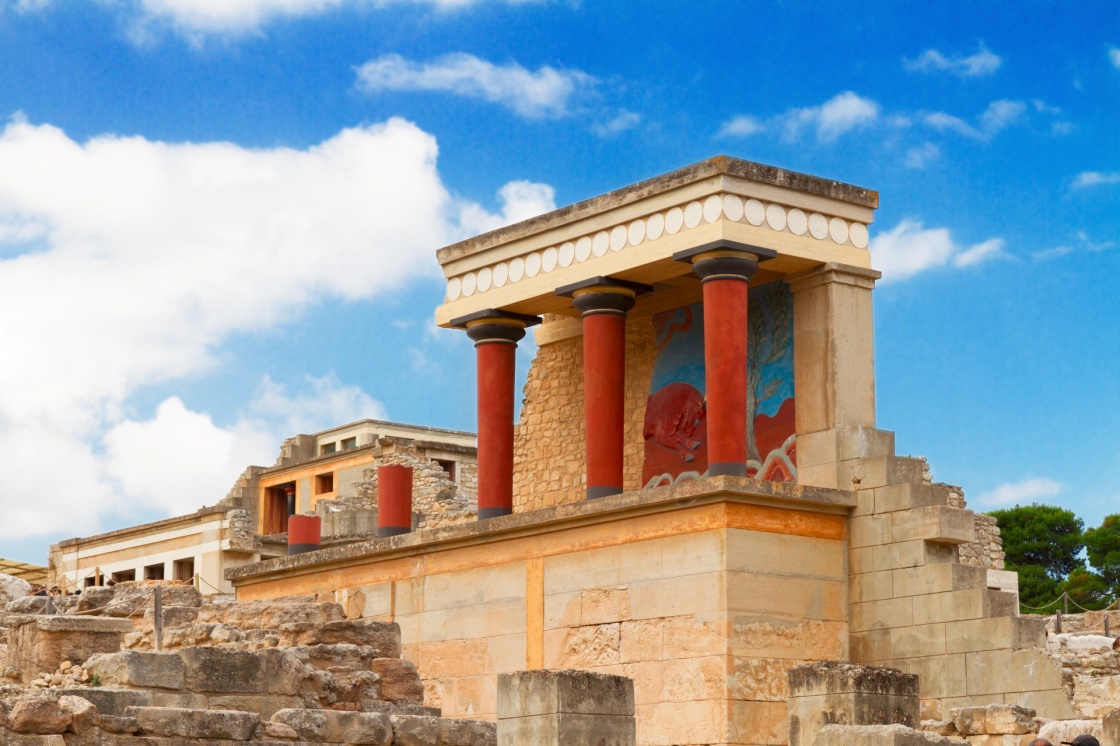In Crete, the largest archeologist site from the Bronze Age is the Knossos Palace. This site was most likely the hub for political as well as religious culture for the Minoan people. The restoration of the site is mainly the dedicated work of the archeologist, Arthur Evans. Images and lovely frescos on the palace walls give an idea of what daily life was like for Minoans. The palace has a central square with rooms like a maze extending around the square. This site is located near Heraklion and is open for the public to tour.
From the Bronze Age through the Greek and Roman eras, the city of Knossos was of significant importance, but, by the 9th century A.D., the local population had shifted to the town of Chandax, which later became the current city of Heraklion. The Knossos ruins in the suburbs of this modern city might be the site from which the legend of The Labyrinth stems. The myth is that the labyrinth became home to Minotaur, half bull and half man, who ate anyone who entered the labyrinth. Theseus, entered using Ariadne's Thread and killed Minotaur becoming Athens's hero.
Not as ancient as the ruins found on the hill of Kephala, the Knossos palace was constructed sometime in the 1700s to the 1400s B.C. Still, the original building cannot be distinguished from later modifications. The palace covers 2,400 square meters and has 1,300 rooms with many connecting corridors. The palace has storerooms or magazines in which were found clay storage pots for olives, beans, dried fish, and other food items. On all four sides of the palace were grand entrance halls, and inside the palace a theatre is found among the other rooms. Advanced architectural techniques can be observed in the structures including sections that rise five stories high.




 'ancient ruines of famouse Knossos palace at Crete, Greece' Neirfy / Shutterstock
'ancient ruines of famouse Knossos palace at Crete, Greece' Neirfy / Shutterstock